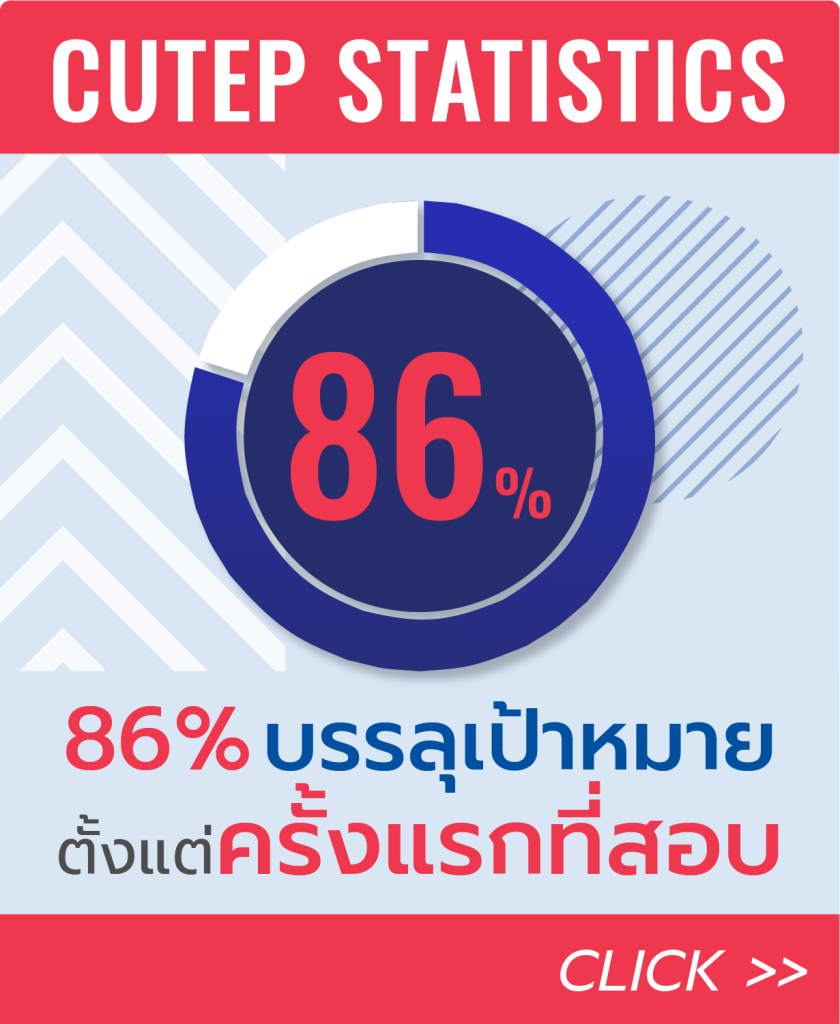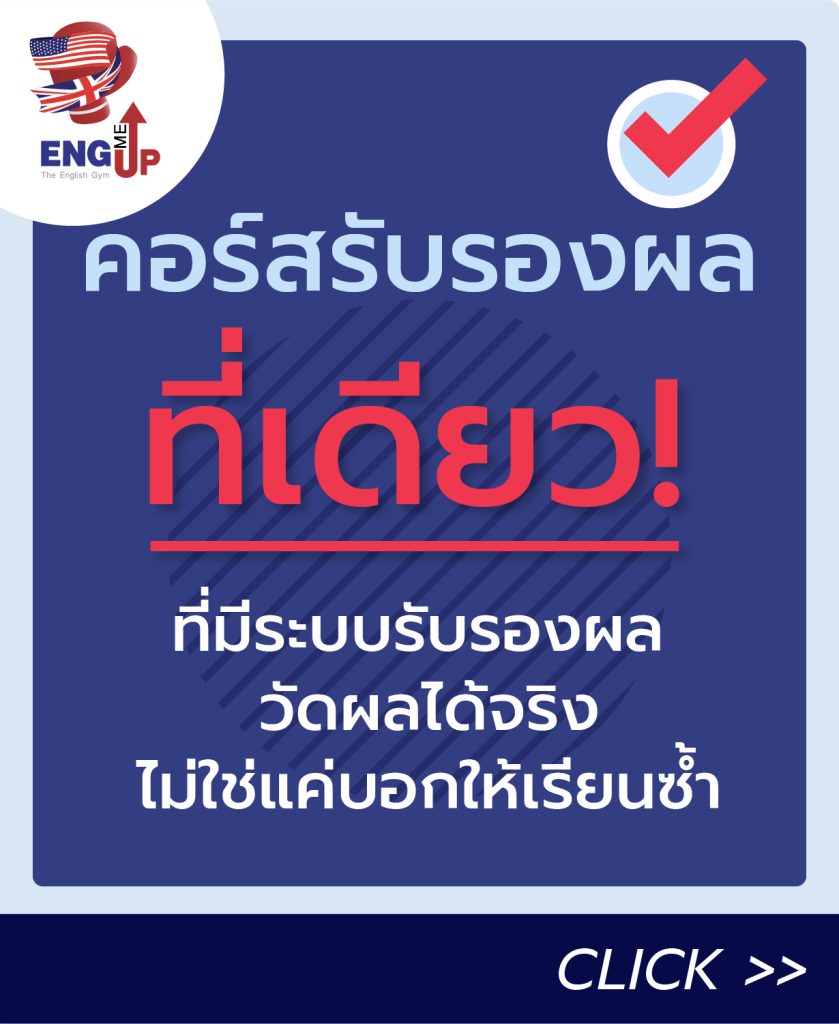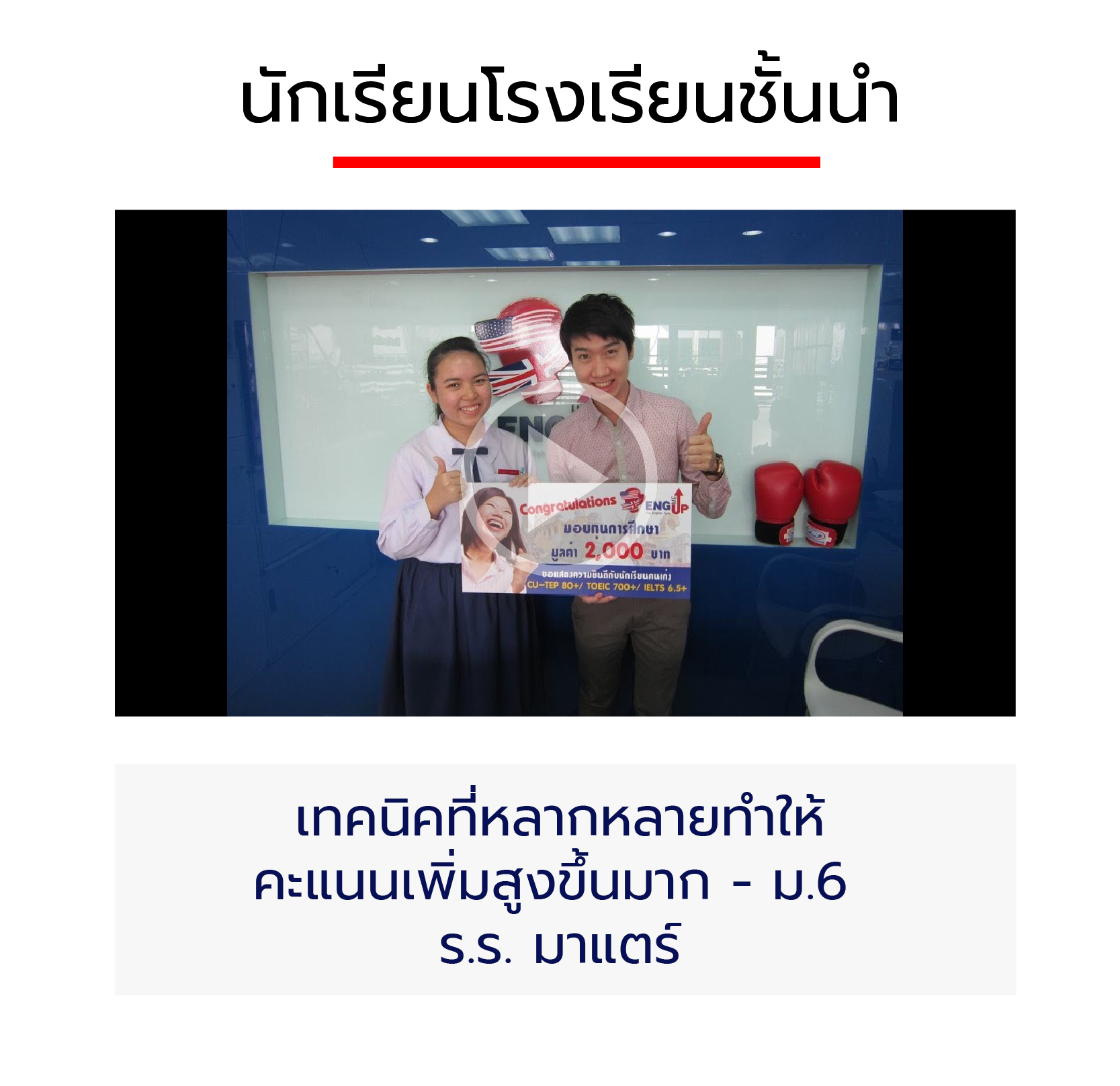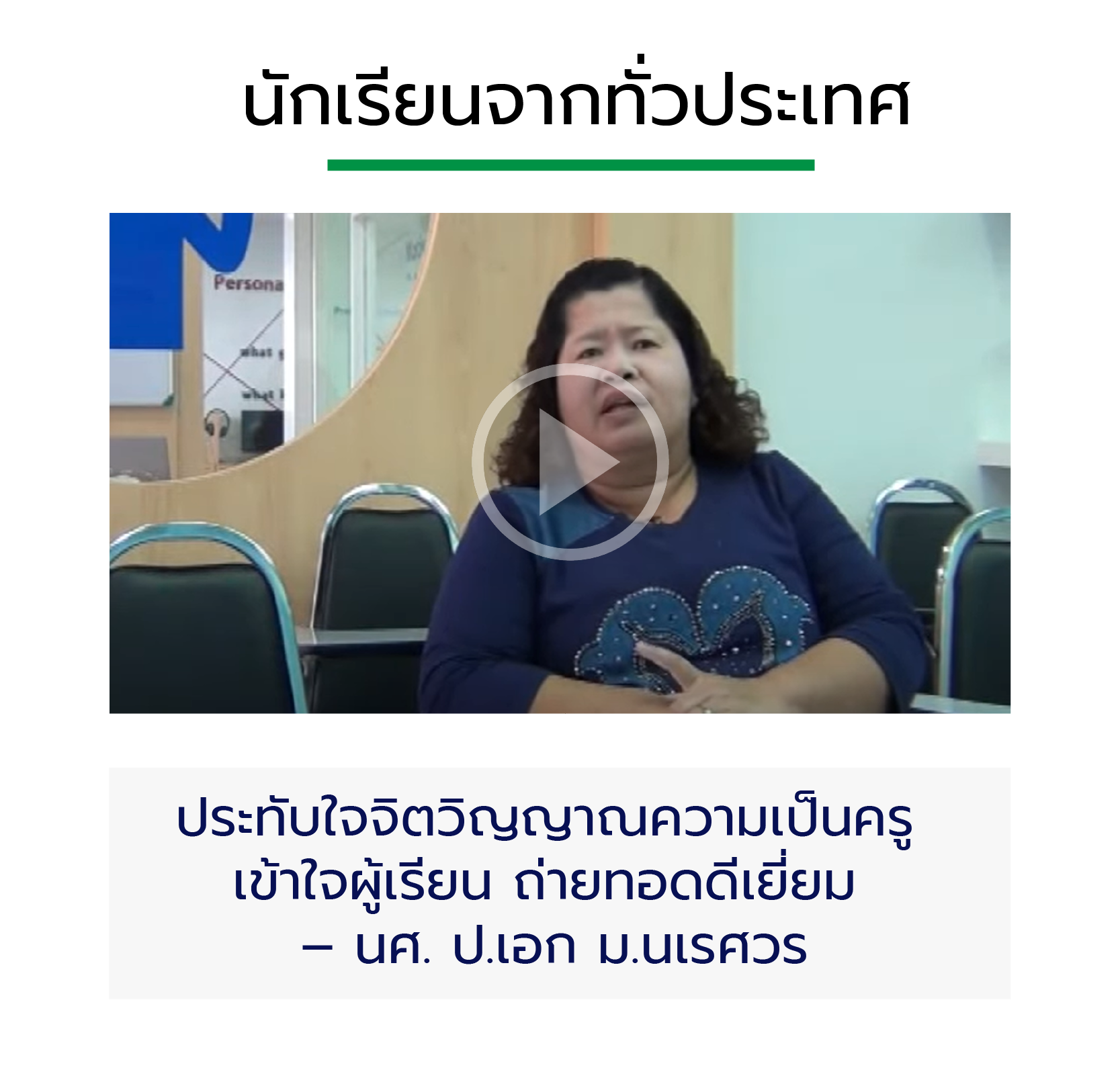Mini Chapter 16
เมื่อเวลามีจำกัด … การเลือกกลยุทธ์การอ่านจึงสำคัญ
ตอนที่ 3: กลยุทธ์ที่ 1 กลยุทธ์ที่ 2 ตื๊อเท่านั้นที่ครองโลก
ในบาง Passage จาก 10 ข้อ เป็นคำถามประเภท Detail Question ไปแล้ว 7-8 ข้อ … การที่เราจะมานั่งอ่านแบบ Standard Reading Technique อ่านไปเรื่อยๆตามลำดับ เข้าใจภาพใหญ่ทั้งหมด ก็คงไม่ใช่เรื่อง
เมื่อเราเจอ Passage แบบนี้ หลายคนชอบครับ เพราะไม่ต้องแยกโครงสร้างได้เก่งมากนัก ไม่ต้องเข้าใจ Passage แบบทะลุปรุโปร่งเน้นกลยุทธ์ Scanning คือ ตื๊อเข้าไว้ … เพียงแค่วง keyword ในคำถาม แล้วอาศัยตาไว กลับไป Scan หาๆๆ ใน Passage
เคล็ดลับเป็นยังไง Chapter นี้ มีคำตอบครับ!
อาจารย์โจบอกเคล็ดลับไว้นิดนึง
ว่าส่วนใหญ่คำถาม Detail จะค่อนข้างใจดีครับ
คือ เรียงจากบนลงล่างมาเรื่อยๆ
(อ้อ! เกือบลืมไป ยังไงก็อยากให้อ่านช่วงต้นๆ กับปลายๆ ของเรื่องเพื่อให้เห็นว่ากำลังจะอ่านเรื่องอะไร หรือจบลงอย่างไรก่อนนะครับ จะได้พอจับทางภาพใหญ่ๆ ถูกบ้าง ซึ่งแน่นอนครับว่า ในหลักสูตรก็จะมี Pattern การขึ้นต้นและลงท้ายของ Passage ในหลายๆ รูปแบบ เพื่อให้เราจับทางและอ่านได้ไวขึ้น ซึ่งการเข้าใจ Pattern ของ Passage จะเป็นการฝึกให้เราเป็น Active Reader คือคาดเดาล่วงหน้าว่าเขาจะเขียนอะไรต่อไปได้ และทำให้เราอ่านได้ไวและมีประสิทธิภาพมากขึ้นกว่าการเป็น Passive Reader คืออ่านไปเรื่อยๆ แปลไปเรื่อยๆ สุดท้ายก็เหมือนที่อาจารย์บอกเคยไว้ โดนเนื้อเรื่องพาไหลไปส่วนที่เป็นน้ำๆ สุดท้ายตีความภาพใหญ่ผิดอีก เศร้าเลยทีนี้ อุตส่าห์อ่านได้ รู้ศัพท์เยอะ)
คำถาม Detail 2 รูปแบบ
แบบที่ 1 คือ ใจดีมี Keyword
ประเภทนี้ เราวงพวกคำเฉพาะในคำถามแล้วไปหาโลดเลยครับ หลายๆ ข้อ บอกชัดเจนด้วยซ้ำว่าอยู่ใน Paragraph ไหน คำถามประเภทนี้ นอกจากเป็นคำถามรายละเอียดของเนื้อหาแล้ว ยังรวมถึงคำถามประเภท ถามคำศัพท์ และพวก Reference อีกด้วย เช่น Those แทนอะไร She แทนใคร นั่นเอง
แบบที่ 2 คือ โหดร้ายและว่ายวน
คือ พวกถามข้อไหนถูก ข้อไหนผิด ที่บอกว่ามันโหด เพราะ workload มันเพิ่ม ต้องมาอ่าน choice A แล้วหา keyword แล้วไปหา อ่าน choice B จับ keyword แล้วไปหา คิดดูเสียเวลามากๆ แล้วบางทีอาจโดนหลอกอีกด้วย เพราะคำที่เราหาน่ะ อาจอยู่หลายที่ก็ได้ คำแนะนำคือ ข้ามพวกข้อลักษณะนี้ไปก่อนครับ ทำลักษณะแบบที่ 1 ให้ครบก่อน เพราะส่วนใหญ่เมื่อเราทำโจทย์แบบที่ 1 จนครบ เท่ากับว่าเราจะอ่านเนื้อหาค่อนข้างเยอะมากๆ แล้ว ทำให้เราสามารถประติดประต่อเรื่อง และทำโจทย์ประเภทแบบที่ 2 ได้ด้วย แต่ถ้าไม่ได้อีก ก็อย่าตะบี้ตะบันนะครับ เว้นไว้ก่อนครับ เดี๋ยวค่อยมาใช้เทคนิคการเดาใน Chapter ต่อๆ ไปกันครับ
พอทำโจทย์ที่เป็น Detail เสร็จแล้ว นึกภาพตามนะครับ เราจะ Scan อ่านมาเยอะประมาณนึงแล้ว เราจะมี Idea อยู่ในใจค่อนข้างเยอะและประติดประต่อเนื้อเรื่องได้ค่อนข้างสมบูรณ์แล้ว ดังนั้น เราก็จะมาตอบคำถามภาพรวม ประเภทที่ถาม Main Idea, Conclusion, Writer’s Attitude, Writer’s Purpose พวกนี้ได้ตามไปด้วยนั่นเอง
เพื่อให้เห็นภาพมากขึ้น เดี๋ยวจะหาว่าคุย เราลองมาทำกันดูสัก 1 Passage ครับ … ยาวเชียว Passage นี้ แต่ความยาวกับความยากไม่เกี่ยวกันนะครับ ยาวๆ น้ำเยอะ เนื้อน้อยก็บ่อย ดังนั้น ยากง่ายหลังจากนี้เราจะมาวัดกันที่คำถาม 10 ข้อตรงนั้นต่างหาก ว่าเสียเวลาขนาดไหน
Example
Multiple theories attempt to explain the origin of foot binding: from the desire to emulate the naturally tiny feet of a favored concubine of a prince, to a story of an empress who had club-like feet, which became viewed as a desirable fashion. However, there is little strong textual evidence for the custom prior to the court of the Southern Tang Dynasty in Nanjing, which celebrated the fame of its dancing girls, renowned for their tiny feet and beautiful bow shoes. What is clear is that foot binding was first practiced among the elite and only in the wealthiest parts of China, which suggests that binding the feet of well-born girls represented their freedom from manual labor and, at the same time, the ability of their husbands to afford wives who did not need to work.
By the 17th century, Han Chinese girls, from the wealthiest to the richest peasants, had their feet bound. Some estimate that as many as 2 billion Chinese women were subjected to this practice, from the late 10th century until 1949, when foot binding was outlawed by the Communists. In contrast to the majority of other Han Chinese, the Hakka of southern China did not practise foot binding and had natural feet. Manchu women were forbidden to bind their feet by an edict from the Emperor after the Manchu started their rule of China in 1644. Many other non-Han ethnic groups continued to observe the custom, some of them practiced loose binding which did not break the bones of the arch and toes but simply narrowed the foot.
The practice of foot binding continued into the 20th century, when both Chinese and Western missionaries called for reform; at this point, a true anti-foot binding movement emerged. Educated Chinese began to realize this aspect of their culture did not reflect well upon them in the eyes of foreigners; and feminists attacked the practice because it caused women to suffer. At the turn of the 20th century, well born women such as Kwan Siew-Wah, a pioneering feminist, advocated for the end of foot-binding. Kwan herself refused the foot binding imposed on her in childhood, so that she could grow normal feet.
There had been earliest but unsuccessful attempts to stop the practice of foot binding, various emperors issuing unsuccessful edicts against it. The Empress Dowager Cixi (a Manchu) issued such an edict following the Boxer Rebellion in order to appease foreigners, but it was rescinded a short time later. In 1911, after the fall of the Qing Dynasty, the new Republic of China government banned foot binding. Women were told to unwrap their feet lest they be killed. Some women’s feet grew a half-inch to an inch after the unwrapping, though some found the new growth process extremely painful as well as emotionally and culturally devastating. Still, societies were founded to support the abolition of foot binding, with contractual agreements made between families who would promise an infant son in marriage to an infant daughter who did not have bound feet. When the Communists took power in 1949, they were able to maintain the strict prohibition on foot binding, which is still in effect today.
81. According to the first paragraph, what is TRUE about foot binding in China?
- It was first practiced in the northern part of China.
- Dancing girls were ordered to have their feet bound.
- Chinese husbands preferred women with natural feet.
- Foot binding suggests that the woman had a rich husband.
82. According to the second paragraph, the Hakka of southern China ____________.
- were the wealthiest ethnic group in China
- did not observe the custom of foot binding
- Were forbidden by the king to bind their feet
- practiced loose binding, making the feet narrow
83. The word “some” (line39) refers to ___________.
- feet
- women
- societies
- governments
84. According to the third paragraph, the following groups of people were against the idea of foot binding EXCEPT ___________________.
- educated Chinese
- Chinese feminists
- Western missionaries
- families with daughters
85. The word “them” (line 26) refers to ___________.
- the Han Chinese
- educated Chinese
- Chinese feminists
- the anti-foot binding movement
86. Why does the writer mention the Empress Dowager Cixi in the fourth paragraph?
- She was greatly influenced by western cultures.
- She was the first empress who refused to have her feet bound.
- She was succeeded in putting an end to the practice of foot binding.
- She was one of the many emperors who tried to stop this practice.
87. The word “appease” (line 35) is closest in meaning to
- satisfy
- provoke
- persuade
- negotiate
88. Which of the following was able to stop the practice of foot binding in China?
- Kwan Siew-Wah
- The Communists
- Western missionaries
- The Manchu Empress
89. According to the last paragraph, an attempt to abolish foot binding was seen in______________.
- a law proposed to stop the custom
- the Communist Party’s series of edicts
- parents’ refusal to bind their daughters’ feet
- marriage proposals to girls with unbound feet
90. The writer wrote this article to ______________.
- narrate a historical account of foot binding in China
- investigating the origin of foot binding in Chinese society
- express his disagreement with the custom of foot binding
- show the strong influence of western cultures on Chinese culture
ก่อนเปิดคลิปเฉลยข้างล่างนี้ จับเวลา 13 นาที ฝึกฝนด้วยตนเองก่อนครับ เริ่มลองจับเวลาดูครับ ว่าเราไวพอไหมนะครับ อย่าลืมว่าเก่งไม่กลัว กลัวช้า ถ้าพร้อมแล้ว ก็เปิดเฉลยดูได้เลยครับ














